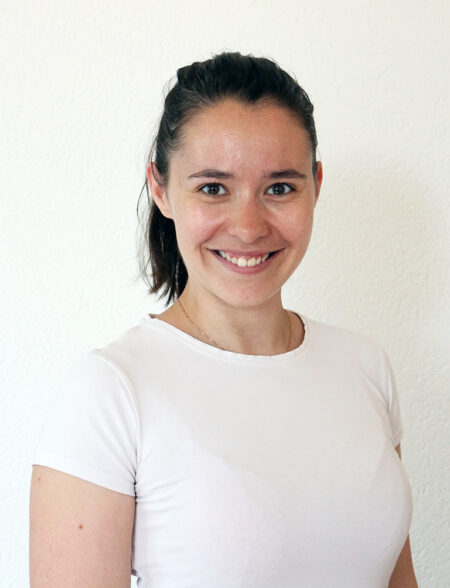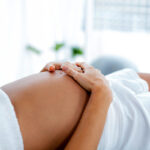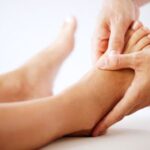Foot Reflexology in Zurich


Foot reflexology can reduce a variety of complaints throughout the body. Self-healing powers are activated, and the foot massage has a generally relaxing effect and can alleviate illnesses. Reflex refers to the body’s response to a stimulus. Reflexology makes use of the body’s ability to reflect itself in all parts of the body. Using special grip techniques, the reflex zones on the foot are specifically treated to stimulate and harmonize the corresponding areas and functions of the body. The massage is performed on the soles of the feet, toes, heels, instep, and tops of the toes.
The attentive perception of the occurring reactions during the treatment time promotes the body’s awareness of the client and gives important information for the further arrangement of the therapy.
The most frequent reactions are:
- Balance, Relaxation
- Stimulation of blood circulation, organ and gland functions
- Stimulation of the excretion of deposits, waste and toxins
- Mobilisation of the body’s own defences
- Skin changes
- short-term resurgence of known problems and emotions are possible
A treatment lasts between 45 and 60 minutes. Shorter or longer treatments can be arranged individually with me. As a rule, several treatments are to be expected for a successful therapy. The massages are usually recognized by the health insurance companies.
Reflexology therapists



PRICES & INFORMATION
45 Min. CHF 112.50
60 Min. CHF 150.-
75 Min. CHF 187.50
90 Min. CHF 225.-
120 Min. CHF 270.- (-10%)
Hourly rate:
CHF 150.- (incl. VAT)
Coverage of supplementary insurance in part up to 100%.
Most supplementary insurances contribute to the costs of treatment for ailments.
A prescription from a doctor is not necessary. Please inquire independently whether your supplementary insurance covers the services of the therapist. The ZSR number and the name are usually sufficient.
Frequently asked questions
Can I have a foot reflexology massage during pregnancy?
Yes, a foot reflexology massage can usually be carried out well on pregnant women. We are well trained and know which points we should not press and adjust the pressure for pregnant women. Shortly before the birth, all points especially the “birth-inducing” points can be pressed and pregnant women often find it very relaxing. The exceptions are all general contraindications, high-risk pregnancies with ordered bed rest etc., and the first trimester (especially with a history of miscarriage).
How often should I have a foot reflexology massage?
The frequency of sessions depends on individual health goals and needs. Some people benefit from weekly sessions, while others prefer monthly sessions. A qualified therapist can suggest a recommended frequency based on your personal situation.
Can reflexology cause pain?
There may be some slight discomfort during the session, especially if a reflex zone corresponding to a tense or imbalanced area of the body is stimulated. However, these sensations should not be painful. Open communication with the therapist is important to ensure that the pressure remains comfortable.
Is there scientific evidence for the effectiveness of foot reflexology?
Numerous studies of foot reflexology are showing positive effects on various health issues, such as stress reduction and improved sleep quality. However, research in this area is not yet conclusive, and further studies are needed to understand the full range of its effectiveness.
Contraindications – When should I not have reflexology?
Reflexology can be a relaxing and therapeutic experience for many people, but there are certain conditions and situations where it is not recommended. Here is a detailed list of contraindications for foot reflexology:
- Acute injuries to the feet: fresh injuries, fractures, strains or sprains to the feet should be healed before reflexology is performed.
- Infections of the feet: Fungal infections, bacterial infections, open wounds or inflammation should be avoided to prevent the spread of infection.
- Thrombosis or deep vein thrombosis (DVT): People with blood clots in the veins of the legs should not receive foot reflexology as this could increase the risk of clot dislodgement.
- Severe heart disease: People with severe heart problems should consult their doctor before having a foot reflexology massage.
- Pregnancy: Caution in the first trimester and in high-risk pregnancies. Otherwise well possible.
- Skin diseases: Eczema, psoriasis, or severe skin rashes on the feet can be aggravated by massage.
- Cancer: Patients currently undergoing cancer treatment should consult their treating physician before undergoing foot reflexology, as certain areas may need to be avoided.
- Diabetes: People with diabetes should exercise caution as changes in circulation can lead to foot problems. Possible after consultation with a doctor.
- Edema: Swelling due to fluid retention, especially in the legs, should be medically evaluated beforehand.
- Acute inflammation or fever: Conditions associated with inflammation or fever should be treated before considering foot reflexology.
- Osteoporosis: In cases of severe osteoporosis, massaging the feet can lead to injury.
- Epilepsy: Some practitioners recommend caution with epilepsy, especially if the condition is triggered by sensory input.
- Mental health conditions: people with certain mental health conditions should speak to their therapist or doctor before having a foot reflexology massage.
It is important that a qualified reflexologist is informed of any health concerns or conditions before treatment begins. A professional practitioner will be able to adjust a treatment accordingly or recommend against the massage if it is in the best interest of the client.
The history and evolution of reflexology: from ancient practices to modern applications
Reflexology is a practice based on centuries-old healing methods that has evolved over time to become a recognized form of alternative medicine.
Ancient roots
The idea that the feet have a connection to other parts of the body and can be healed through massage can be found in various ancient cultures. In Chinese medicine, the feet were seen as a mirror image of the body, with the stimulation of certain points intended to activate the body’s self-healing powers. Similar concepts were also practiced in Egyptian and Indian medicine.
Modern development
The modern form of foot reflexology owes its development mainly to the American physician Dr. William H. Fitzgerald. In the early years of the 20th century, Dr. Fitzgerald developed the theory of “zone therapy”, in which the body was divided into ten vertical zones stretching from head to toe. He postulated that stimulating certain points along these zones could relieve pain and illness in other parts of the body.
Further development by Eunice Ingham
Another important figure in the history of foot reflexology is Eunice Ingham, an American masseuse who further developed Dr. Fitzgerald’s zone therapy in the 1930s. Ingham refined the techniques and identified certain reflex zones on the feet that corresponded to specific organs and body parts. She also developed the “compressed zone”, a method in which the entire foot is massaged in order to achieve a comprehensive effect.
Hanne Marquardt and today’s practice
One of the most influential figures in modern foot reflexology is Hanne Marquardt, a German masseuse and physiotherapist. Marquardt made a decisive contribution to the spread and recognition of foot reflexology. Marquardt has made a decisive contribution to the spread and recognition of foot reflexology. Her method emphasizes holistic health and takes into account both physical and psychological aspects. She founded the “International Academy of Hanne Marquardt Reflexology” to teach and train her techniques.
Application and recognition
Nowadays, reflexology is practiced and appreciated by people all over the world. It is used not only for relaxation and stress relief, but also to relieve pain, improve circulation and support general well-being. The technique is offered by many professional therapists and is also accessible for self-massage at home.
In summary, the history of foot reflexology is rich in tradition and innovation. From its ancient roots to its modern application, this practice has established itself as an effective method of promoting well-being and supporting health. As techniques evolve and are refined, reflexology remains a fascinating link between the past, present and future of alternative medicine.
Overview massage offer
Top 5 massages

Medical Massage
This is usually the best choice for acute and chronic musculoskeletal complaints.

Classic Massage
For simple tensions and to clear the "mind".

Pregnancy Massage
Possible from the 1st month of pregnancy. The massage is individually adapted.

Sportsmassage
A massage with more pressure for prevention or regeneration of the body before or after workouts and competitions.

Ayurvedic Massages
Abhyanga and other Ayurvedic massages, both therapeutic and for pure relaxation.
Other massages

Fullbody massage
For all those who want to reduce stress and relieve tension.

Foot Reflexology
Harmonization of the body via reflex zones on the foot. Therapeutic or for relaxation.

Manual Pain Therapy
A mixture of trigger point therapy, osteopressure and exercises. Similar to Liebscher & Bracht.

DORN Therapy
Gentle spinal therapy for spinal misalignments, leg length discrepancy, pelvic obliquity and much more.

Massage Voucher
Order a massage voucher for your loved ones or colleagues online.






